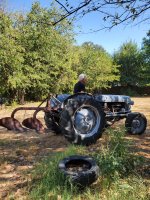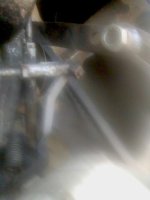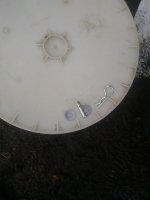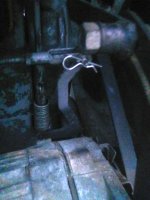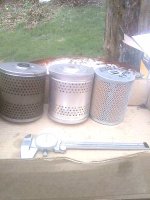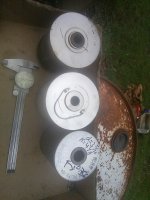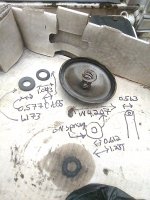More work completed. After dist R + R I flushed and refilled the dist oil. As mentioned it's a PITA to get at the zerk filler plug (non original?) with dist on the tractor, easy when dist off 7/16" open. A screw with a flat screw driver slot and pipe threaded would be better, then could remove/install easy on tractor.
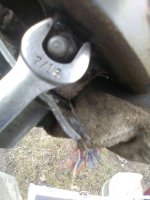
I oiled the drive gear/shaft and got the distributor back in, and and set initial static timing with a rolling paper (picture for reference) , this was OK when tested with an ohm meter later. Put on flywheel on static timing mark, turn dist until paper just slips, just like with an ohm meter when the continuity opens. You need new/smooth points to use the paper method.
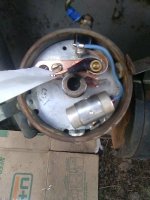
I took the plug wires off the old cap and found trouble, the plug wire terminals were corroded inside the old cap. Couldn't see this without pulling the wires and one cap tower also had a crack in it. I had to crack the rest of the tower to even get the wire/connector out. New Std cap is all brass terminals.
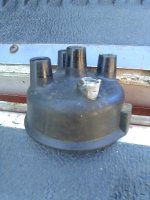
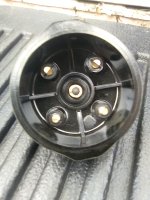
I decided to replace the wires (7mm copper wire core) even though they "looked" OK, besides the corroded dist end terminals. New dist terminal wire ends are easy to replace and cheap ~$0.50-1.00. With an ohm meter, two wires showed some resistance from the bare wire at dist end, to the spark plug terminals. Most likely inside at the plug terminals as the freshly cut and stripped dist wire ends looked fine. Didn't want to spin my wheels with the old wires........
I found a
universal Standard set #804W that is 7mm and has tinned copper wires, youn cut to length/install dist terminal/boot. This was for an 8-cylinder set. Made up 4-plug wires and a coil wire.
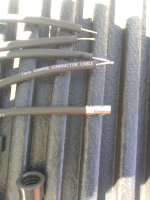
The 4 shortest wires in the set were more than long enough to use ,
so I have an extra set of 4 wires that are quite long/uncut with terminals/boots. When cut to length the wire cutoffs were still long enough to make another full 4-wire set if I ever need to replace a wire or to have for fixing other engines. As a side note, a similar universal Standard wire set for 4-cylinder engines
was $2 more and has 4 less plug wires?!
The old wires (center), 4 leftovers/cutoffs from making the set (left), and 4 new/uncut longest wires.

The new wire set installed. Picture shows 2nd condensor that came hooked up on the tractor mounted on the coil mounting bolt. I disconnected that to see if that was making my tach/dwell crazy on RPMs, no luck there.
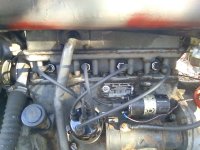
I started up tractor, fired right up. Still have the problem with my tach/dwell not reading RPMs right? Dwell was 34 degrees.
Next is the engine oil/filter and flush out. Oil looked clean/new when I got the tractor, had been sitting years. Must have been a lot of condensation inside, as has gotten cloudier and looked uglier with little use. When I drained it was cloudy, and a mess inside the filter. I should have changed the "new looking" oil once I first got it started. Trying to save cost me.
Plan is to flush oil pan though oil filler neck with some diesel to clean the pan, and clean out filter housing well. I'm wondering if I should pull the rocker cover and clean that too? I was getting some water drips from oil breather pipe when hot.
I would need get/order a rocker cover gasket. Check valve lash then too. And I just put more gas in the gas tank!!!, that I'd have to drain......
